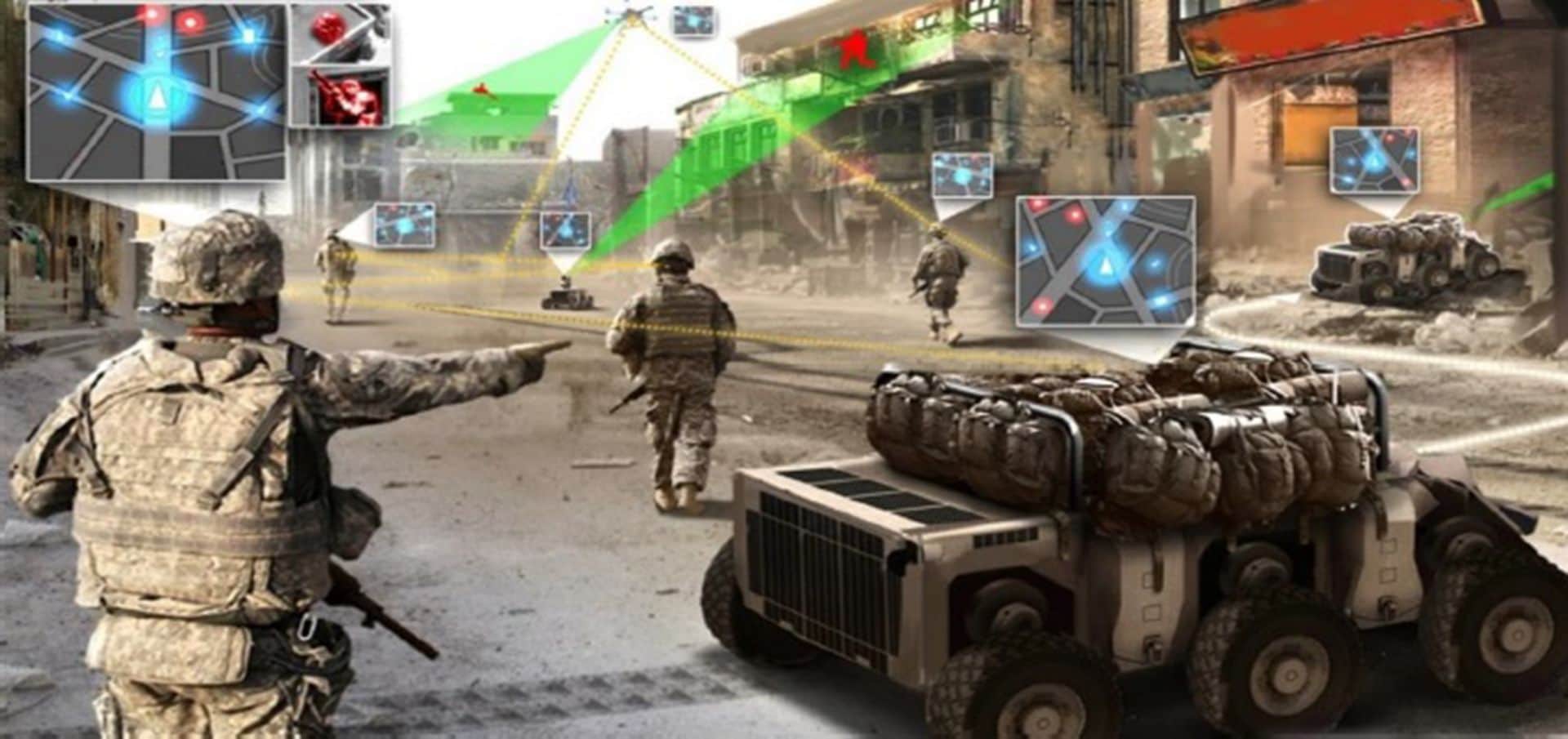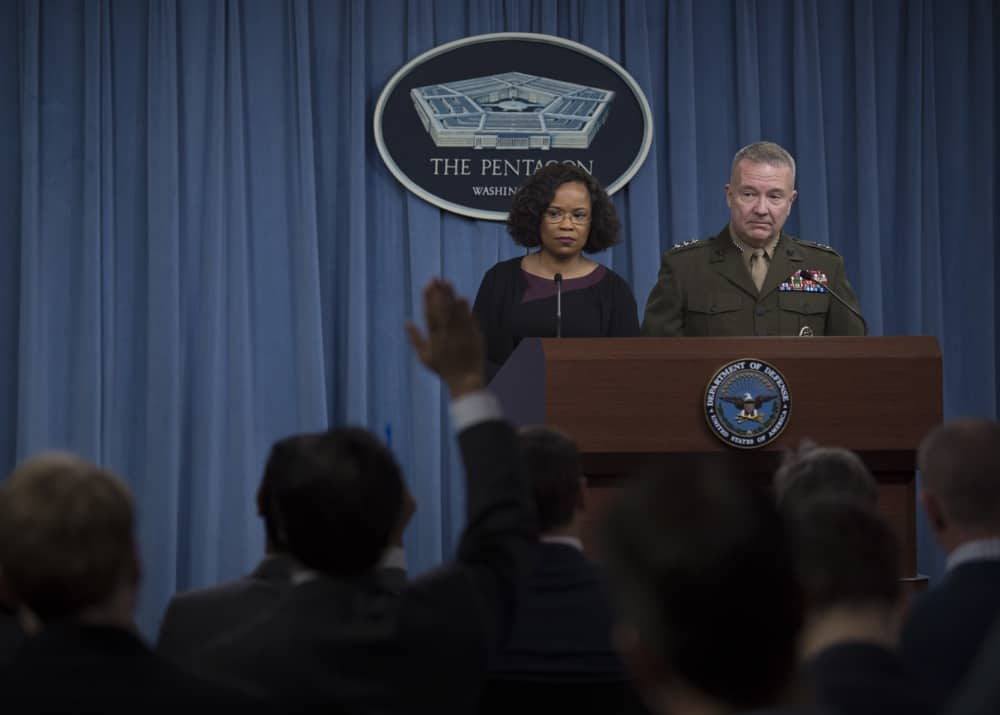The Army and the Air Force are working together to flesh out how to fight a multidomain battle, a senior Air Force commander said today during a presentation at the Brookings Institution here.
Air Force Gen. James M. Holmes, commander of Air Combat Command, said he is working closely with Gen. David G. Perkins, commander of the Army’s Training and Doctrine Command, to develop the concept.
Holmes started his talk at the think tank with a history lesson, recalling that 27 years ago, the U.S. military was nine days into Operation Desert Storm. That battle to get Saddam Hussein’s forces out of Kuwait was a test of the AirLand Battle Doctrine.
It was an overwhelming success.
Fast-forward to Iraq in 2003, and American and allied forces went from the berm to Baghdad using all aspects of AirLand to cut through the Iraqi military, dominate the air and end the active phase of the conflict quickly.
Near-Peer Competitors Took Note
American conventional power was never more evident, Holmes said, and near-peer competitors took note. “That drove the world to start looking for new options to try to counter what U.S. forces could bring to the battlefield,” he said.
Over the next decade, the U.S. military had to deal with counterinsurgency warfare and counterterrorism operations. “Our adversaries kept thinking and kept working,” Holmes said. “Now we face an environment with a rising China [and] with a resurgent Russia that bring integrated, multidomain approaches to try to counter that conventional might that they saw us display.”
Adversaries are using a mix of conventional forces, special operations forces, cyber tools, space tools and sophisticated electronic warfare tools “in place of conventional forces and alongside conventional forces,” the general said.
To an extent, the general said, this is also dictated by the complexity of threats today. He used Syria as an example, noting that U.S. forces are in Syria advising a primarily Arab and Kurdish force going after the Islamic State of Iraq and Syria. U.S. airmen share the skies with Syrian and Russian aircraft. Turkish aircraft are attacking into Syria to negate what they see as a terror threat on their border.
Adapting to Change
The whole thing requires a flexibility to understand the rules, understand what to do when the rules or adversaries change and how to adapt, Holmes said.
Weapons married to technical assets and the ability to communicate quickly means there are “no hiding places from that unblinking eye of unblinking multidomain awareness,” Holmes said.
“There are no sanctuaries where we can unload our forces, get them ready for a battle and then move into a battle area,” he added.
The question becomes how the United States can counter this, he said. “The lesson from history is our armed forces cooperate and work together best when we can at least contemplate defeat,” Holmes said. “I think we are still the most powerful conventional force in the world. We still bring advantages that no one else can bring to the battlefield. But when we square off and think about the peer adversaries of a rising China and a resurgent Russia, … there’s no birthright that we have to win. We have to think, ‘We have to fight. We have to work hard at it.’”
As for bringing all domains together in a way to put pressure on adversaries, the Navy and Air Force worked together to form Air-Sea Battle, Holmes said. Marine Corps Gen. Joe Dunford, the chairman of the Joint Chiefs of Staff, he noted, has talked about multidomain, multiregional conflict and using U.S. forces and their ability to be all over the world to put pressure on adversaries anywhere. “We will continue to work forward and refine it,” Holmes said.
Tabletop Exercises
Over the next year, Training and Doctrine Command and Air Combat Command will host a series of tabletop exercises to see how the services can work together “and turn that into a doctrine and concept that we can agree on,” Holmes said.
“We have developed 13 initiatives … that the Air Force and Army can work together on, and … our goal is to try to find a way that the joint force, working together, can hold the initiative — because in this world where both sides can see everything and know everything, both sides have long-range fires … the side that wins will be the side that can command the initiative by driving an optempo that the other side can’t keep up with.”
This will require multidomain awareness and advanced battle management to gather forces and concentrate them precisely where and when they are needed, the general said. “It will take agile, resilient comms to be able to communicate across that force,” he said.











